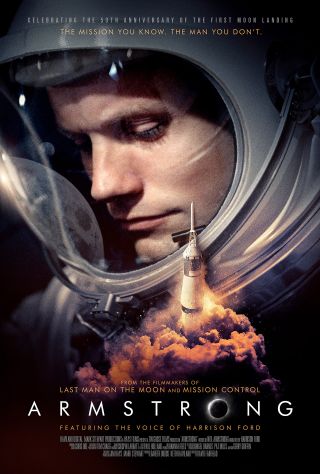


The documentary included this footage alongside conventional footage from 35 and 16 mm film, still photography, and closed-circuit television footage.

The large-format footage includes scenes from Launch Complex 39, spectators present for the launch, the launch of the Saturn V rocket, the recovery of astronauts Buzz Aldrin, Neil Armstrong, and Michael Collins and the Apollo 11 command module Columbia, and post-mission efforts aboard the USS Hornet. In May 2017, cooperation between Miller's production team, NASA, and the National Archives and Records Administration resulted in the discovery of unreleased 70 mm footage from the preparation, launch, mission control operations, recovery and post flight activities of Apollo 11.
#Man on the moon movie documentary archive
In addition, three wordless biographical sequences summarise the lives of Edwin Aldrin, Neil Armstrong and Michael Collins up to 1969 by means of family photographs and archive footage. Portions of the mission are illustrated by animated graphics depicting the parts of the Apollo spacecraft as line drawings, the designs of which are based on the cel-animated graphics in Theo Kamecke's 1971 documentary Moonwalk One. The final film contains no voice-over narration or interviews beyond what was available in the contemporary source material. Miller's conception of the film was centered on a direct cinema approach. CNN Films subsequently became a partner in the film. In late 2016, Todd Douglas Miller had recently completed work on The Last Steps, a documentary about Apollo 17, when British archivist and film editor Stephen Slater suggested making a similarly themed documentary for the upcoming 50th anniversary of Apollo 11. It also received five nominations at the 72nd Primetime Creative Arts Emmy Awards, including Outstanding Cinematography for a Nonfiction Program for Aldrin and Collins, winning three for its editing and sound. The film won a leading five awards at the 5th Critics' Choice Documentary Awards, including Best Documentary Feature. Apollo 11 received acclaim from critics and grossed $15 million. The film premiered at the Sundance Film Festival on January 24, 2019, and was released theatrically in the United States by Neon on March 1, 2019. The Saturn V rocket, Apollo crew consisting of Buzz Aldrin, Neil Armstrong, and Michael Collins, and Apollo program Earth-based mission operations engineers are prominently featured in the film. The film consists solely of archival footage, including 70 mm film previously unreleased to the public, and does not feature narration, interviews or modern recreations. It focuses on the 1969 Apollo 11 mission, the first spaceflight from which men walked on the Moon. Even so, when asked if it was worth it, you can guess Cernan’s response.Apollo 11 is a 2019 American documentary film edited, produced and directed by Todd Douglas Miller. It’s easy to fall into cliché and get highfalutin when it comes to Apollo this excellent film brings a rare dose of clarity over its impact on the people involved. He’s also frank about how the relentless monomania required to essentially ride a bomb into space didn’t exactly make for a stable family life: his marriage collapsed, and his relationship with his daughter was far from easy.

The deaths of the Apollo 1 astronauts on the launchpad are well-known, but he ruefully points out it took the 1966 deaths of two Project Gemini astronauts in a plane crash to bump him (and others) up the roster. The Last Man On The Moon distinguishes itself by focusing not on the procedural ( For All Mankind is definitive for that) or a survey of the impact of the experience on the Apollo astronauts’ lives (check out In The Shadow Of The Moon), but by digging deep into Cernan’s life and examining the meeting between the titanic quest of actually going to the moon and more domestic, earthbound concerns, it finds a fresh approach.Īcross extensive interviews, Cernan is frank about the human cost of NASA’s frenetic drive to the moon. The tricky part in evaluating Apollo docs, though, is that the material is so inherently awesome (in the proper sense of the word) that your average nine-year-old with iMovie on their phone could make something cracking out of the footage available. The monomania required to ride a bomb into space didn’t exactly make for a stable family life.


 0 kommentar(er)
0 kommentar(er)
